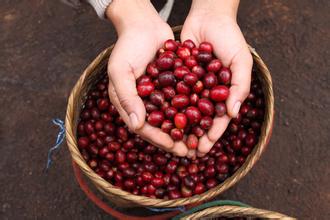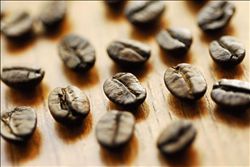Introduction of Indonesian Coffee Flavor of Indonesian Coffee
Coffee that makes you feel refreshed and ready to drink.
Coffee is produced throughout Indonesia (Indonesia), and Java occupies an extremely important position in coffee history.
In the mid-17th century, coffee trees were introduced to Indonesia by the Dutch (some official sources believe that earlier). The first batch of coffee from Java was sold to Amsterdam in 1712. However, coffee trees in all plantations were destroyed by coffee rust in 1877, and Robart coffee trees had to be introduced from Africa to replace the original species. Today, only 6% or 10% of coffee beans are Arabian coffee beans. Indonesia is the world's leading producer of Robbins coffee, producing 6.8 million bags of coffee a year, with more than half of the coffee coming from small plantations, accounting for about 90 per cent of the total production.
The best growing areas of the archipelago are in Java, Sumatra (Blawan), Sulawesi (Sulawesi) and Flores.
Java produces exquisite aromatic coffee with relatively low acidity, delicate taste and good balance. The aroma and acidity of Java coffee is better than that of Sumatra and Sulawesi. The best plantations in Java are Blawan, Jambit, Kayumas and Pankur. Java mocha is a mixture of Java coffee and Yemeni mocha coffee.
Sumatra, the second largest island in the Indonesian archipelago, is the center of Indonesia's oil industry, and its rubber and timber are also famous exports. But the coffee in Sumatra is more eye-catching, similar to Java coffee, but with slightly heavier grains. Coffee beans from Mandheling and Ankola have also received a lot of attention, and the former is even known as the world's fullest coffee beans.
The island of Sulawesi, located between Brneo and New Guinea, is sometimes called Celebes. The coffee produced on the island is full of grains and rich in flavor. The best coffee beans come from Kalossi and Rantepao in the southern part of the island. In many brands, try Celebes Carosi Coffee.
One of the main coffee producers in New Guinea is the Sigri plantation, whose products are the same as the overall style of archipelago coffee, full of particles and well balanced.
On the whole, Indonesian coffee has a strong flavor, mellow taste, slightly syrup flavor and excellent acidity, and its two main export markets are Germany and Japan, which reflects the excellent quality of the coffee. What attracts consumers is the unique quality of its Arabica coffee beans. You can add milk or cream to high-quality Indonesian coffee without worrying about affecting its taste. Indonesian coffee is divided into six grades, the best of which is AP. But no one is sure what these two capital letters stand for.
When ships replaced sailboats, the coffee produced in these islands faced the same problem as Indian coffee from Mysore-that is, consumers were used to coffee affected by long-distance travel, so they were reluctant to accept the taste of this "fresh" coffee. In order to solve this problem, the Indonesian government tried to copy coffee affected by long-distance travel. They stored the coffee beans for as long as a year. However, what is not satisfactory is that the taste of this wet-treated coffee is not so widely accepted that it affects the good reputation of its coffee.
However, Indonesia's "store" or "journey" coffee is still produced today. It is generally sold under the brands of "Old Government", "Old Brown" and "Old Java".
Although Indonesia produces so much admirable coffee, it is puzzling that local residents prefer Turkish-style coffee to its famous European-style coffee.
44. Reunion
Is no longer the hometown of bourbon Arabica coffee beans.
In 1715, the first coffee trees (about 40) were transported from the Yemeni port of Moka to La R é union, but unfortunately only two survived. By 1719, coffee plantations had begun to flourish and the first coffee beans were sold. Over the next few years, the government took a hard measure: the islanders, black and white, had to plant 100 coffee trees a year. The law was amended in 1723 to emphasize that all slaves must plant 200 mocha coffee trees a year and that anyone who damaged the coffee tree should be put to death.
At that time, the island was still a French colony, called Bourbon Island, where coffee was produced and Arabian coffee trees shipped from the area to other countries also had a name.
Interestingly, today, "bourbon" Arabian coffee trees have been widely planted and favored all over the world, but almost no coffee is grown in Reunion. Here are the general characteristics of bourbon coffee.

Important Notice :
前街咖啡 FrontStreet Coffee has moved to new addredd:
FrontStreet Coffee Address: 315,Donghua East Road,GuangZhou
Tel:020 38364473
- Prev

The origin of Mocha coffee beans The flavor of Mocha coffee beans Boutique coffee
Mocha beans are smaller than most coffee beans, which makes them look like peas. In fact, peaberrybeans are sometimes referred to as mocha beans. Mocha coffee beans are similar in shape to Ethiopian Harrar coffee beans.
- Next

El Salvador coffee beans are produced in El Salvador.
In the early 1990s, guerrilla warfare significantly disrupted the country's national economy, reducing coffee production from 3.5 million bags in the early 1970s to 2.5 million bags in 1990- 1991. The eastern part of the country was most affected by guerrilla warfare, and many farmers and workers were forced to leave their estates. The shortage of funds has led to a sharp drop in coffee production, from 1200 kilograms per hectare in the past to less than 1,000 kilograms per hectare today.
Related
- Does Rose Summer choose Blue, Green or Red? Detailed explanation of Rose Summer Coffee plots and Classification in Panamanian Jade Manor
- What is the difference between the origin, producing area, processing plant, cooperative and manor of coffee beans?
- How fine does the espresso powder fit? how to grind the espresso?
- Sca coffee roasting degree color card coffee roasting degree 8 roasting color values what do you mean?
- The practice of lattes: how to make lattes at home
- Introduction to Indonesian Fine Coffee beans-- Java Coffee producing area of Indonesian Arabica Coffee
- How much will the flavor of light and medium roasted rose summer be expressed? What baking level is rose summer suitable for?
- Introduction to the characteristics of washing, sun-drying or wet-planing coffee commonly used in Mantenin, Indonesia
- Price characteristics of Arabica Coffee Bean Starbucks introduction to Manning Coffee Bean Taste producing area Variety Manor
- What is the authentic Yega flavor? What are the flavor characteristics of the really excellent Yejasuffi coffee beans?

